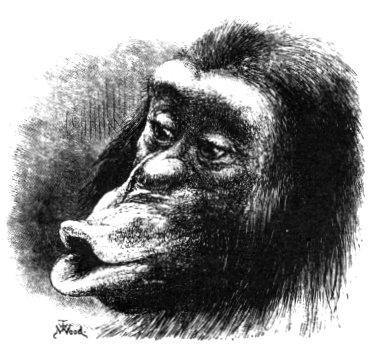Animals and Emotion
Today, let's talk to animals. The University of Houston's College of Engineering presents this series about the machines that make our civilization run, and the people whose ingenuity created them.
I visited a street fair that offered elephant rides for children. I stopped at the fence, asked the name of a nearby African elephant, and was told she was Rosie. "Hey Rosie," I said, "what a fine beautiful elephant you are." Rosie liked that. She walked over, curled her trunk and placed the tip right in front of my face. The gesture said, "Don't be afraid of what I'm about to do." Then, in a quick move she uncoiled her trunk, rewound it around my neck, and began nuzzling the top of my bald head.
The whole act was as calculated as a kiss on a first date. This was a clear expression of good will. It was about making friends. I was as pleased to have that elephant pet me (for that's what she'd done) as my cat is pleased when I pet her.
Now, was this silly romanticism? Was I projecting my emotions on to an elephant? Jeffrey Masson's book When Elephants Weep offers insight. In 1995 Masson, a pychotherapist, continued what Darwin began in 1872. Darwin's book, The Expression of Emotions in Man and Animals, contradicted supremacist 19th-century thinking. His contemporaries believed humans were superior to animals, whites superior to dark-skinned people, and males superior to females. They believed true emotion could be felt only near the top of the tree.
Masson traces theories about animal emotions through the age of modern science. In the 17th century, Descartes flatly said that animals were robots. They only appear to have feelings like ours. Nonsense, Voltaire said. Animals have anatomy like ours. They surely feel as we do as well. But his was a minority view.
To look for human attributes in animals has been branded with the word anthropomorphism. You no more endow an animal with human feelings than you do a rock or a tree. A tacit rule precludes applying science to animal feelings. Masson quotes an administrator at an animal training institute: "... if you talked to any one of us, we'd say, 'Sure they have emotions,' but as an organization we wouldn't want to be depicted as saying [that]."
Darwin's study of animals reflected a lifelong talent for letting facts break through old beliefs. He cataloged emotional expressions of species. Since animals have less facial mobility than we, he included their use of full-body language to express feeling.
And we're back to Masson's title, When Elephants Weep. Darwin looked for evidence of weeping among animals and could find only anecdotes about African elephants shedding tears under great pain or distress. Masson also finds unverifiable anecdotes. But, he points out: Tears aren't grief; they're only symbols of grief. We have to look at animal expressions of feeling on their own terms.
Tears or no, it's patently obvious to anyone one who's spent time with animals that they feel grief -- and anger and joy. So I don't know if Rosie sheds tears. But I do know she enriched my life that day she told me that she accepted me as a kindred animal.
I'm John Lienhard, at the University of Houston, where we're interested in the way inventive minds work.
(Theme music)
Darwin, C., The Expression of Emotions in Man and Animals. This was originally published in 1872. It has been reprinted many times thereafter. See, e.g., London: Julian Friedmann Publishers, 1979 (with an introduction by S.J. Rachman.)
Masson, J.M., When Elephants Weep: The Emotional Lives of Animals (with Susan McCarthy). New York: Dell Publishing, 1995.

Sketch of a disappointed and sulky chimpanzee
From The Expression of Emotions in Man and Animals, 1872